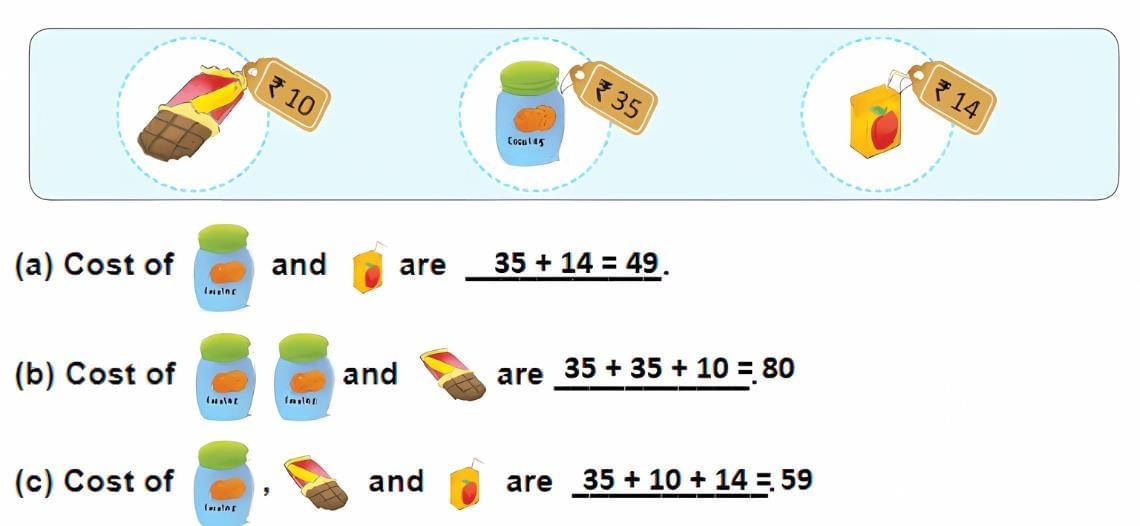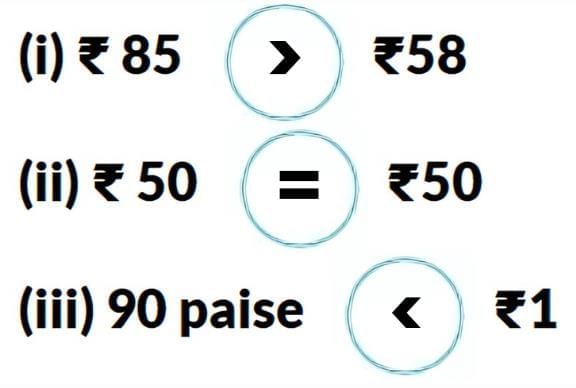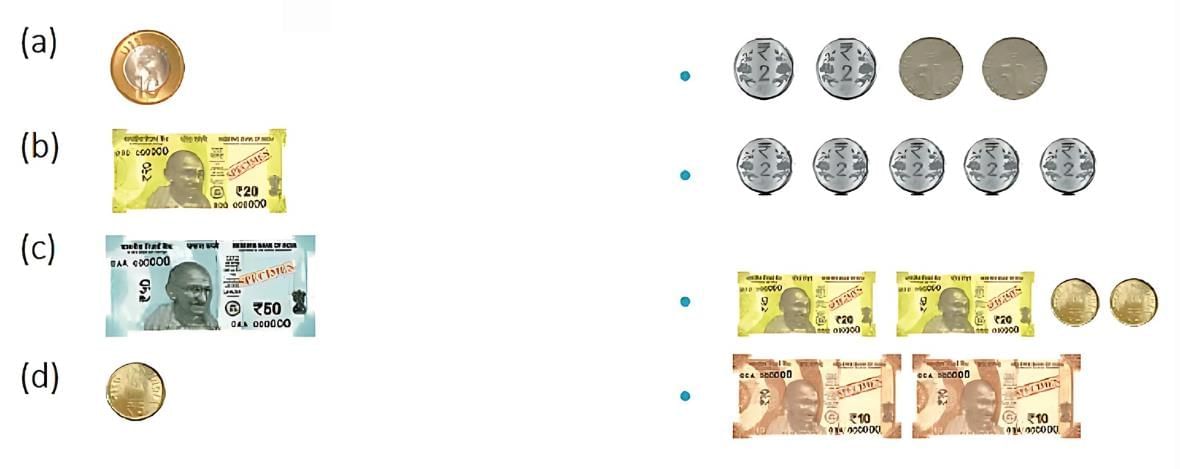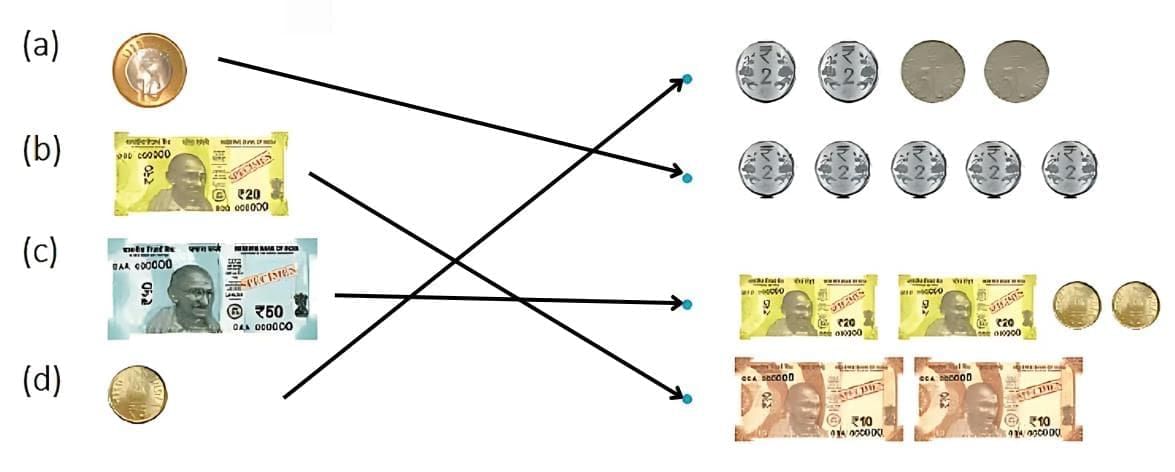Money - 1 Class 1 Worksheet Maths Chapter 12
| Table of contents |

|
| Q1. Solve these real-life money situations. |

|
| Q2. Add and write the answer. |

|
| Q3. Fill in the blanks |

|
| Q4. Use the correct symbol <, = or >. |

|
| Q5. Match the following |

|
Q1. Solve these real-life money situations.
(i)
Ans:
Total money Ritu had = Rs. 85
She spent = Rs. 62
Money Left = 85 - 62 = Rs. 23
(ii)
Ans:
Money received from mother = Rs. 10
Money received from grandmother = Rs. 20
Total money = 10 + 20 = Rs. 30
(iii)
Ans:
Cost of Drawing pad = Rs. 35
Crayons less by = Rs. 4
Price of Crayons = 35 - 4 = Rs. 31
Q2. Add and write the answer.
(i) 
(ii) 
(iii) 
Q3. Fill in the blanks
(a) Look at the items and their costs on the price tags and fill in the blanks.

(b) Fill in the number of coins in the blanks. One is done for you.
Five 2-rupee coins make 10 rupees.
Ans:
(i) Five 10-rupee coins make 50 rupees.
(ii) Four 5-rupee coins make 20 rupees.
(iii) Two 10-rupee coins make 20 rupees.
Q4. Use the correct symbol <, = or >.
(i) ₹ 85  ₹58
₹58
(ii) ₹ 50  ₹50
₹50
(iii) 90 paise  ₹1
₹1
Ans: 
(i) ₹85 > ₹58
If Raju has ₹85 and Meena has ₹58,
Raju has more money than Meena.
So we use > (more than).
(ii) ₹50 = ₹50
If Rani has ₹50 and Mohan also has ₹50,
They have the same money.
So we use = (same as).
(iii) 90 paise < ₹1
₹1 means 100 paise.
90 paise is less than 100 paise.
So we use < (less than).
Q5. Match the following

Ans: 
|
16 videos|135 docs|23 tests
|
FAQs on Money - 1 Class 1 Worksheet Maths Chapter 12
| 1. What are some common real-life money situations that I might encounter? |  |
| 2. How can I effectively manage my monthly budget? |  |
| 3. What should I consider when comparing price tags for similar products? |  |
| 4. How do I know if I’m making a good investment? |  |
| 5. What are some tips for saving money effectively? |  |















